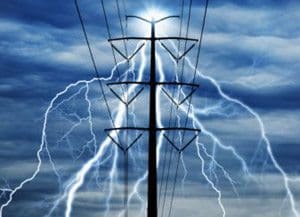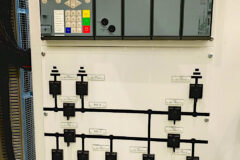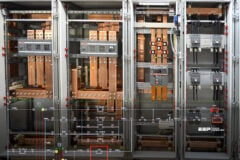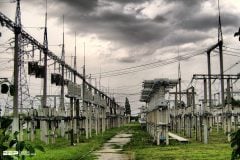 Lightning strikes and switching transients on power lines will propagate down the line and eventually arrive at a substation. There, the voltage will be clamped by lightning arresters to a level the substation equipment can handle without damage. This voltage will be passed on to the distribution lines in two forms: differential and common modes. The differential-mode voltage is the voltage between the power line conductors themselves, and it does not directly involve voltages to ground. The common-mode voltages are the voltages of the several conductors to ground.
Lightning strikes and switching transients on power lines will propagate down the line and eventually arrive at a substation. There, the voltage will be clamped by lightning arresters to a level the substation equipment can handle without damage. This voltage will be passed on to the distribution lines in two forms: differential and common modes. The differential-mode voltage is the voltage between the power line conductors themselves, and it does not directly involve voltages to ground. The common-mode voltages are the voltages of the several conductors to ground.
Differential-mode voltages are passed directly through transformers and appear on the secondaries as transformed by the turns ratio. Some attenuation may result from intrawinding capacitances, but interwinding capacitances may actually increase the voltage.
Common-mode voltages are transferred to the secondary through the interwinding capacitances and can be effectively stopped by an electrostatic shield between the windings. Absent the shield, however, they can appear on the secondaries with a magnitude close to that on the primary.
This can be a severe problem on medium-voltage systems where there is the possibility of 10 kV or more being developed on secondaries to ground. The best protection from line-induced transients of all types on secondaries is a set of MOVs.
Line-to-line MOVs on the secondary are best for differential-mode voltages, and line-to-ground MOVs will provide the best protection from common-mode voltages if a shield is not used.
An electrostatic shield (Faraday screen) is a relatively lowcost addition to a transformer, and it is a good practice to specify a shield on transformers with medium-voltage primaries. With a shield, line-to-line MOVs are likely to provide sufficient transient protection.
Dry-type transformers should be equipped with at least distribution-class lightning arresters on medium-voltage circuits.










